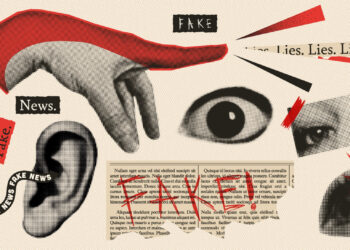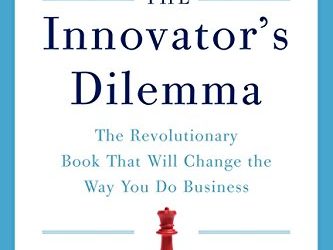Editor’s Note: A recent blog post decrying the deplorable state of the MOOC made me think of this 2011 post from Joe Esposito. The concept of digital learning tools seemed so obvious at one point, yet it still remains an unsolved riddle. Has anything much changed since Joe wrote this in 2011?
Over the past few years I have been meeting with a steady stream of entrepreneurs who are determined to reshape the textbook business. While some of these new ventures are in the area of K-12 publishing (these tend to be the more ambitious schemes), most have targeted the market for higher education textbooks.

This is not surprising, as many of these individuals are themselves recent college graduates. Having just spent four years that led to the utter impoverishment of their parents, they now look back on their uninterrupted debauchery that would make Caligula blush and turn their attention to the reform of higher education. Their target? The textbook, symbol of much that is wrong with the world.
The complaints about the textbook are loud and not unfamiliar. Textbooks are boring, expensive, and heavy to lug around. But the strongest charge against the textbook is its inanimate nature: it just sits there. It lacks the media types of a feature film, the interactivity of a computer game, the social dimension of Facebook. How do you expect anyone to learn from this?
Cooler heads (which are always unwelcome) might consider the fact that people have been learning from “inanimate” texts for many years. Einstein did not have the benefit of working with Microsoft Kinect, nor did Weber’s explorations of the nature of bureaucracy partake of 3D simulations worthy of James Cameron. This is not to say that textbooks cannot and should not be improved, but we should keep matters in perspective. A significant improvement along some dimension of the textbook would be highly welcome, but it is not true that students don’t learn and that the textbook is responsible. Students do learn — and the textbook is at least in part responsible. The world works, or we wouldn’t be here.
Most analyses of the textbook by its detractors look at it in isolation. They view the textbook as they do other books — novels, say, or a celebrity tell-all. Such books are contained within their covers, or, if they are manifested as e-books, within a virtual container. A trade book is a standalone thing; it exists by itself. Among many other innovations, there are now meaningful efforts to place the experience of reading a trade book into a social context, but these attempts are still immature. In any event, these innovators imagine a book’s social reading dimension as a wrapper around the text of the book. A book thus is an experiential object of some 300 pages or so or the equivalent of 300 pages in screens.
The problem with thinking about textbooks in this way is that textbooks have always had context: the classroom, the syllabus. A textbook is not a standalone object but a component of the instructional method of a teacher. It goes without saying that some teachers are better than others and that the same book in the contexts of two different teachers can be illuminated in very different ways, but the textbook is created with a context in mind. Comparing a textbook with a trade book is like comparing a carburetor with a car.
Thus the critique of the textbook as a form is really a critique of pedagogical method. Superficially, what is being automated is the book, but the ultimate object of automation is the classroom and the instructor. A fully-realized electronic textbook would provide as much context as the library, as much interaction as the seminar, and authority equivalent to that of a teacher. The gap is beginning to close between Blackboard and Moodle on one hand and the ten-pound text on organic chemistry bulging from a backpack on the other.
The outlines of the various reform strategies for textbook are now beginning to emerge:
The industrial engineering model approaches the textbook with an eye on efficiency and cost reduction. Books cost too much, and students have to pay for them; therefore, you can build a business on lower-cost alternatives. The key is to use computer technology to drive out costs. Thus print is thrown out immediately, prices are dropped, and students are engaged via electronic means. There is already a prominent exponent of this model, FlatWorld Knowledge, whose big investment from Bertelsmann makes them a serious contender for market share.
The “sons of Wikipedia” adopt a crowdsourced model for content creation. Who is an author? What is editorial authority? Like Wikipedia itself, textbooks (not the best name for this kind of thing) can be put together by an active community that works together creating and editing content. The virtue of this model is partly economic (the cost of product development is reduced), but it also appeals to the notion that a large group of people can do a better job than a single individual.
The crowdsourcing model is not as crazy as it sounds. The academic community is in the business of developing and asserting authority — hence the high regard for authors — and crowdsourcing would seem to pull in the opposite direction, but except for texts prepared for upper-level seminars and graduate students, most textbook publishing is a reassembly of information that has appeared before. No one expects a K-12 textbook to be “original” in the sense of a breakthrough work by an author with extraordinary vision, nor are the large textbooks adopted for college freshmen and sophomores the equivalent of the new research that appears in journals or in academic monographs. Textbooks collect and synthesize the current information in a field. It is thus not a wild leap to ask a collaborative group to make this same kind of collection and synthesis. The act of creating an introduction to macroeconomics is very different from writing a novel or an examination of a still-developing situation.
We should expect to see more of the crowdsourced model, some coming from the world of OER (Open Educational Resources), where material is created and posted online for the free use of teachers and students. Such material can be assembled into different packages and serve as a base for the work of a particular instructor, who may add other material to it.
The Hollywood model for the new textbook takes the view that more is better and that multimedia is better than text. Sometimes this is true. In the multimedia model, the textbook is transformed with images and sound; the potential is to create for the learning experience the equivalent of sitting in a movie theater. In some instances such multimedia has distinct advantages over text (an animation of a palpitating heart may be more instructive than a description of the heart’s activity), though in other areas it remains to be seen whether multimedia provides greater engagement and superior instruction. Despite the astonishingly low cost of digital media, the introduction of multimedia to the textbook is likely to increase production costs. Thus the multimedia model may be at odds with a model based on finding efficiencies and cost reduction.
The videogame model takes the Hollywood model one step further. The principle is that all textbooks aspire to the condition of World of Warcraft. Not satisfied with multimedia that presents information, the videogame method brings the student into a world of interactive learning objects. Like the Hollywood model, the videogame model is likely to drive up production costs (and is thus less likely to be used for classes with small enrollments), but it also begins to move closer to a comprehensive learning experience, encompassing the dynamic nature of the seminar as well as the informational nature of the traditional textbook. One intriguing aspect of this model is the introduction of real-time assessment: as the student works — or plays — through the material, the program determines the student’s skill and learning level and adjusts the objects presented for study accordingly. With the videogame model, the line between the traditional textbook and online courses has virtually disappeared.
The platform model seeks to aggregate various content types into a single offering. Think, for example, of Netflix, which offers a single subscription to the works of hundreds of producers. The platform model can also be developed to provide services for publishers on a common technology, as Highwire Press provides a platform for the publishers of research journals. In the aggregation option, the challenge is to amass as much content as possible. This can lead to conflicts with publishers over contracts and copyright and may lead to the invocation of Vestron’s Law, in which the publishers struggle to revert rights back from the aggregator after having initially granted them. On the other hand, if an aggregator provides enough value, many publishers, after a bout of hand-wringing, will continue to work with it, just as many publishers today continue to have ongoing but ambivalent arrangements with ProQuest and EBSCO.
The social network model attempts to put the content of a textbook into the context of social engagement, re-creating, as it were, the dynamic nature of the classroom in a virtual environment. Thus a chapter on genetics will be wrapped with tools to enable students and instructors to share and comment on information, essentially taking much of the capabilities of a learning management system and bringing them to bear on a specific text. Companies that are exploring this model generally fall into one of two camps: those that provide content and then add a social wrapper around it, and those that provide social tools that can be used for any content that an instructor chooses. The tools providers themselves are further divided into those that target sales to someone within an academic institution (instructors themselves or the CIO) and those that attempt to market their services to traditional publishers. An open question is whether there is a place for new sets of social tools or whether the winning strategy will be to default to Facebook.
This taxonomy is not intended to imply that these various models are mutually exclusive. A platform company may build social tools directly into its offering, and even the most polished provider of textbook-as-interactive game may seek efficiencies through automated interfaces and a crisply designed workflow.
What I have yet to hear from any of these new and proposed offerings is an accurate description of how the college textbook market actually works. For example, the key dynamic of this industry is that students don’t choose their own textbooks; their instructors do. Thus the thrust of the industry is to persuade instructors to choose one text over another. Instructors naturally want the best for their students and choose textbooks with the finest and most advanced features. If these features drive up costs, well, it’s not the instructors who are paying for them. While some instructors are keenly aware of the costs of textbooks, the fact remains that if the people or institutions making the choices were also responsible for payment, the industry (and the products) would look very different.
It appears that the center of innovation for textbooks is likely to be outside the mainstream of four-year colleges — away, that is, from environments where the faculty calls all the shots. We should look for new developments at commercial institutions, which typically purchase texts that are then given to students, and community colleges, where many students cannot afford to purchase books at all. At these institutions a new market is evolving where the prerogatives of individual faculty members are not as broad as in more traditional schools. The long-term question is whether these emerging markets will ultimately grow and begin to influence the nature of mainstream textbook adoption.
Discussion
3 Thoughts on "Stick to Your Ribs: Back to School: Rethinking the Textbook"
This piece is still very much on target. A less kind way of looking at the textbook business is that the greatest threat to it’s continued existence as a for-profit activity is the burgeoning realization that it is a business that sells things that it doesn’t really own. A scam, a racket. Without the need for physical media (paper), one can boldly ask the eTextbook publisher, “How much of what you are selling is actually protected by a copyright that you hold?” Since facts, concepts and ideas cannot be copyrighted, what’s left? The unique expression of an idea? Try imposing that criterion on a description of Hannibal crossing the alps, the Pythagorean theorem, etc., etc.
Thus, we have DRM and similar schemes that use Learning Management Systems to lock up content. The last refuge of a business that relies on a kind of scarcity that can only be created artificially. The jig is nearly up.
On the mark as usual. I posted on KA’s post today too. I think that post also applies here. I agree the issue may be more about pedagogy than books. We forget that the books are usually used for 3 months. Production costs need to be kept in check.For many years in higher ed–breaking even made publishers happy. The bigger problem is the cost of the college/univ. and the cost of living in many areas where students attend college.It seems even kids who can afford them complain about the cost also. Publishers take flack because it is a large out of pocket expense.
I am reminded of Neal Stephenson’s The Diamond Age and the “book”, similar to today’s tablet or smart phone, which provided both intelligent AI or what we would call today, the semantic web, and human in a blend for the individual. In this case, there is no “textbook” for all but one that is dynamic and meets the need of the individual. We think of education in discreet modules called classes where students progress in lock-step, age-defined, cohorts. With the rise of competency in the HEI’s and mingrating down to K-12 and up to life-long, the semantic knowledge base adjusts what the individual receives or, better,accesses guided by the human support, the faculty as guide.
Basically, the “text” is tempered by context, all elements. With “big data”, which is what a text creator draws on, the semantic web can access more effectively.



